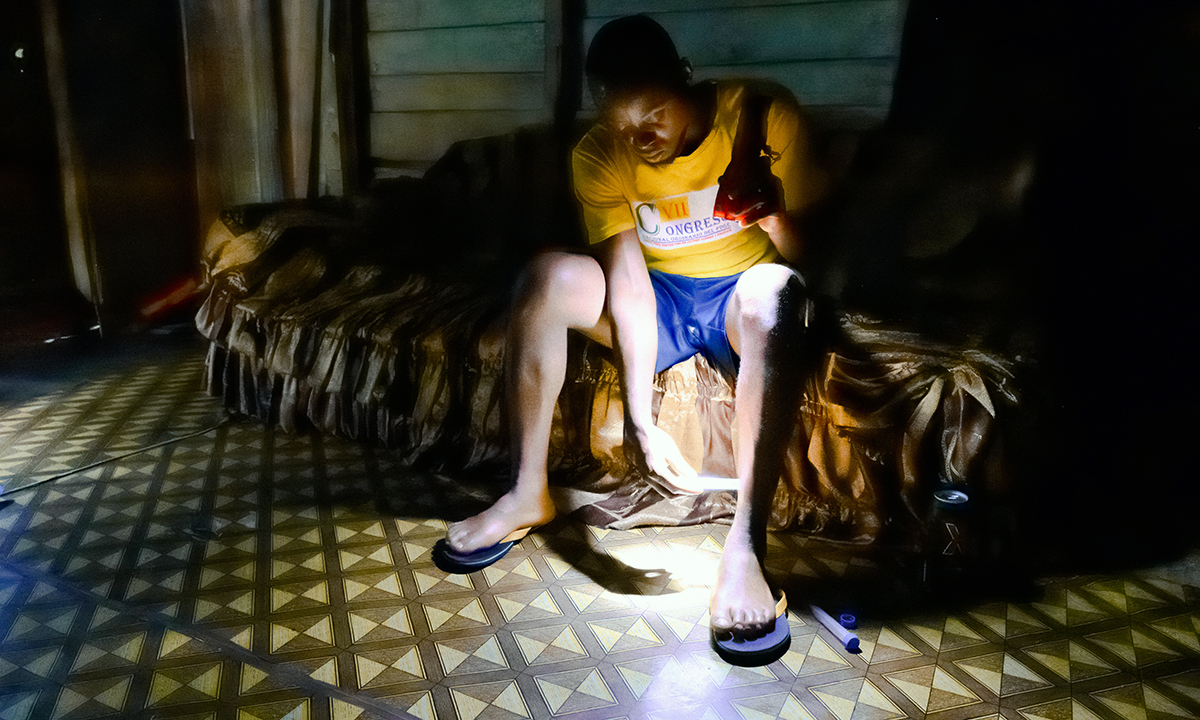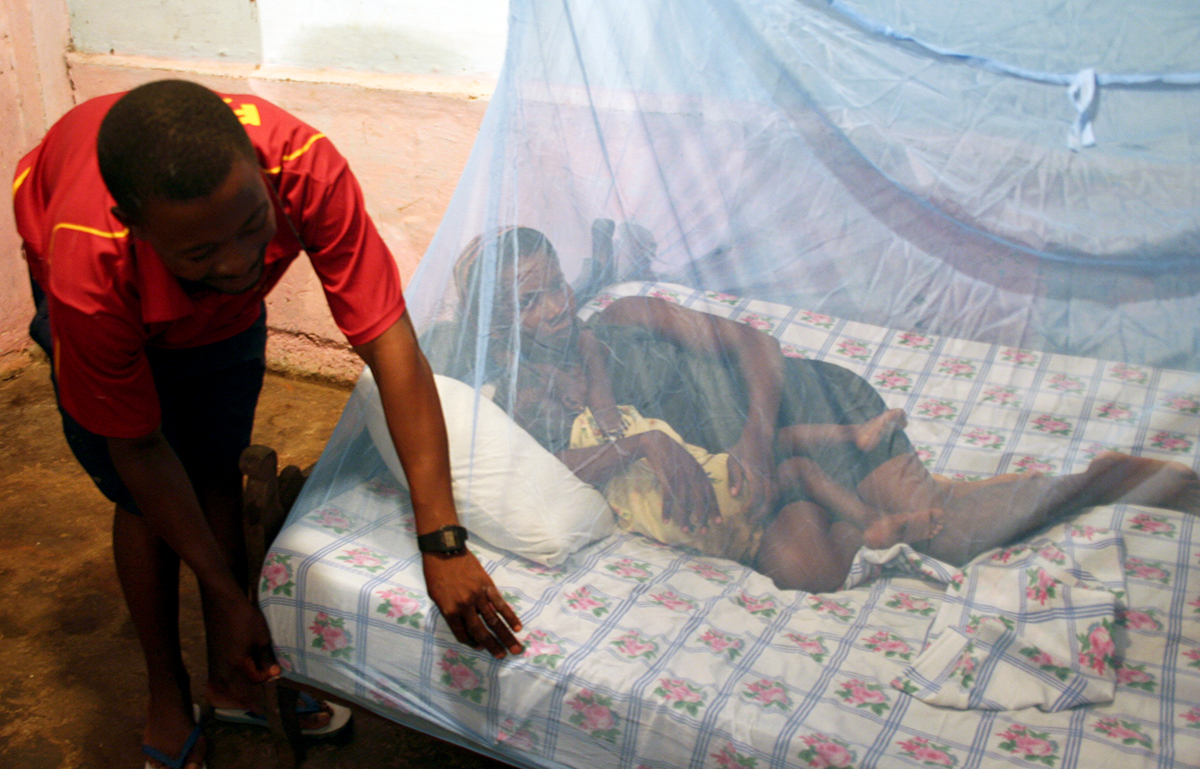Study Finds Urgent Need for New Tools to Protect Against Mosquito Bites on Bioko Island
August 15, 2024

A human landing catch (HLC) in action on Bioko Island, Equatorial Guinea. A volunteer sits indoors with his legs exposed and uses a flashlight to spot mosquitoes landing to feed on him and then captures them for further analysis. HLC is performed both indoors and outdoors between 6 p.m. and 6 a.m.
A research article published in the International Journal of Infectious Diseases by MCD’s Bioko Island Malaria Elimination Project (BIMEP) team found that two-thirds of mosquito bites may not be preventable with current vector-control tools on Bioko Island, Equatorial Guinea.
The research focused on six years of data from two sources to gain further insights on malaria prevalence in the human population and mosquito-human interactions. The team reviewed annual malaria indicator survey data of more than 13,700 individuals tested for malaria from 2017 to 2022 as well as monthly mosquito surveillance data from the same six years.
This research is one of the first studies to deeply integrate human and mosquito behavior data, offering a novel look into malaria transmission patterns on the island.
The team found that most mosquito bites occur indoors during times before people go to bed. This explains estimates that about two-thirds of mosquito bites are not averted by sleeping under a bed net (i.e., long-lasting insecticide-treated nets (LLINs)). Estimates show that, on average, a person receives 2.7 mosquito bites per night outdoors, 8.5 bites indoors if not using a LLIN, and 4.7 bites indoors if using a LLIN; the latter group likely would have been bitten indoors before going to bed.
Regardless of where mosquito bites occurred, malaria infection was associated with more bites. Other factors associated with receiving more bites included older age, being male, living in rural areas, not using a LLIN, and going indoors later at night.

A LLIN protects a mother and child from indoor-biting mosquitoes on Bioko Island. Using a LLIN is critical in reducing the risk of malaria infection at the individual level while high-use rates among the population may provide community-wide protection even for non-LLIN users.
These findings challenge common practices and assumptions about the effectiveness of household malaria-control interventions, such as using bed nets and having houses sprayed with residual insecticides (IRS). The study recommends reinforcing existing household interventions that tackle indoor biting (e.g., LLINs and IRS) as well as developing and testing new tools that help target both outdoor biting and indoor biting in early evening hours before people go to bed.
“This last bit is well known but never quantified as we showed it, so it has significant implications for how we approach malaria control strategies globally,” said Guillermo Garcia, deputy director of MCD’s International Programs. “The study provides crucial findings and demonstrates the value of combining diverse datasets to gain a more comprehensive understanding of malaria transmission dynamics.”
During the first four years of the BIMEP, there were decreases in malaria transmission on the island, including an almost 70% reduction in malaria prevalence, 90% reduction in child anemia, and a 66% reduction in all-cause child mortality. In addition, two main mosquito species were eliminated.
Despite the substantial efforts invested and unequivocal gains achieved, malaria continues to be an issue not only on Bioko Island, but throughout sub-Saharan Africa. As this study shows, adapting interventions according to human and mosquito behavior is critical in eliminating malaria. Further progress requires not only new tools but also stronger political will and commitment.